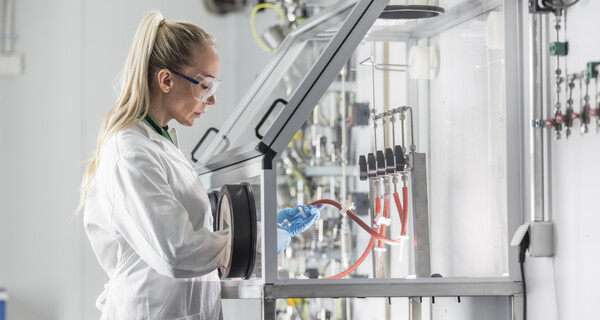FORTUM CORPORATION PRESS RELEASE 29.11.2023
Fortum has invested 10 million euros to research and develop the production of high-quality plastics utilising CO2 captured from waste incineration. The project – known as Carbon2x – would also significantly cut emissions from waste-to-energy plants. However, to enable more widespread adoption of innovative technologies such as Carbon2x EU needs to define clear rules on carbon capture and utilisation.
The Carbon2x concept, launched in 2022, is one of the world’s first carbon capture and utilization (CCU) projects aiming to transform the waste-to-energy sector by recycling the CO2 emissions from waste incineration and returning the captured CO2 back to material circulation in the form of high-quality plastics. Following the successful pilot of the CCU concept, Fortum has allocated 10 million euros in piloting the entire CO2 based plastic production process. First samples of the plastic material are expected to be unveiled in late summer 2024.
“Every year, Europeans generate nearly 100 million tonnes of unrecycled waste that is turned into energy. Incineration is a key part of Europe’s current waste management system, but it is also a source of emissions. We believe that Carbon2x can help cut these emissions by 90% while turning them into new raw materials for high quality plastics that could be used in, for example, food and cosmetics packaging. This would helpreduce our dependence on fossil-based raw materials, improve Europe’s self-sufficiency, and decarbonize waste incineration,” says Timo Piispa, Senior Vice President of Fortum’s Circular Solutions.
The pilot for CO2-based plastics production will be conducted with several industrial-scale containers at Fortum’s Riihimäki waste-to-energy plant. Fortum also operates waste incineration plants in Denmark and Sweden, with another plant under construction in the United Kingdom. In the future, Carbon2x technology could be used at these sites as well.
Three actions the EU should take to drive investment in innovative CCU technologies
CCU has enormous potential to cut emissions in hard-to-abate sectors such as waste incineration, and captured CO2 could play a significant role in replacing virgin fossil carbon inputs with a sustainable and carbon-neutral alternative for feedstock. However, the EU currently lacks rules for CCU applications that focus on producing alternative feedstocks for e.g., consumer products, which usually have shorter lifespans.
“To reach EU climate objectives, establishing a clear legal framework for CCU is critical for investment to take off. Technologies like Carbon2x are an important example of the potential impact CCU can have: Widespread adoption of the technology across Europe’s waste-to-energy plants could mean that 90% of the carbon dioxide released into the atmosphere from incineration is captured and absorbed into products,” Piispa says.
Fortum is specifically calling for:
- Establishing calculation rules for the recycling rate for CCU processes utilising waste-originated carbon. The CO2-based production of materials such as plastics should be considered recycling as defined in the Waste Framework Directive, because the materials treated, i.e., the feedstock, is waste.
- Revising ETS to incentivise CCU processes which store CO2 in short-lived products, which replace virgin fossil carbon inputs with a sustainable and carbon-neutral alternative. Too much of the EU’s focus is on CCS and long-term storage, and this does not tackle the feedstock challenge. When waste incineration is included in EU ETS, a plant capturing CO2 and binding the emissions to products, even with shorter lifespan like plastics, should not have to surrender emission allowances.
- Recognizing industrial removals like Carbon2x in the EU’s carbon removals certification framework in line with ETS. As mixed municipal waste typically contains 40–50% biogenic content, waste incineration with CCU could play a major role in carbon removals. Focusing solely on the lifetime of the products could lead to products of little or no value being produced just for carbon storage. Thus, the framework should recognize that products have different lifetimes and reward that.
More information on the changes necessary to help drive the EU’s transition to a more sustainable circular economy can be found in Fortum’s white paper.
Fortum Corporation
Communications
Further information:
Tony Rehn, Carbon2x Programme Director, tony [dot] rehn [at] fortum [dot] com (tony[dot]rehn[at]fortum[dot]com), +358 40 485 5857
Janne Koivisto, Public Affairs Manager, janne [dot] koivisto [at] fortum [dot] com (janne[dot]koivisto[at]fortum[dot]com), +358 50 321 3639
Maiju Daniel-Huhtaniska, Senior Communications Manager, maiju [dot] daniel-huhtaniska [at] fortum [dot] com (maiju[dot]daniel-huhtaniska[at]fortum[dot]com), +358 50 35 02861
Fortum
Fortum is a Nordic energy company. Our purpose is to power a world where people, businesses and nature thrive together. We are one of the cleanest energy producers in Europe and our actions are guided by our ambitious environmental targets. We generate and deliver clean energy reliably and help industries to decarbonise their processes and grow. Our core operations in the Nordics comprise of efficient, CO2-free power generation as well as reliable supply of electricity and district heat to private and business customers. For our ~5 000 employees, we commit to be a safe, and inspiring workplace. Fortum's share is listed on Nasdaq Helsinki. fortum.com
